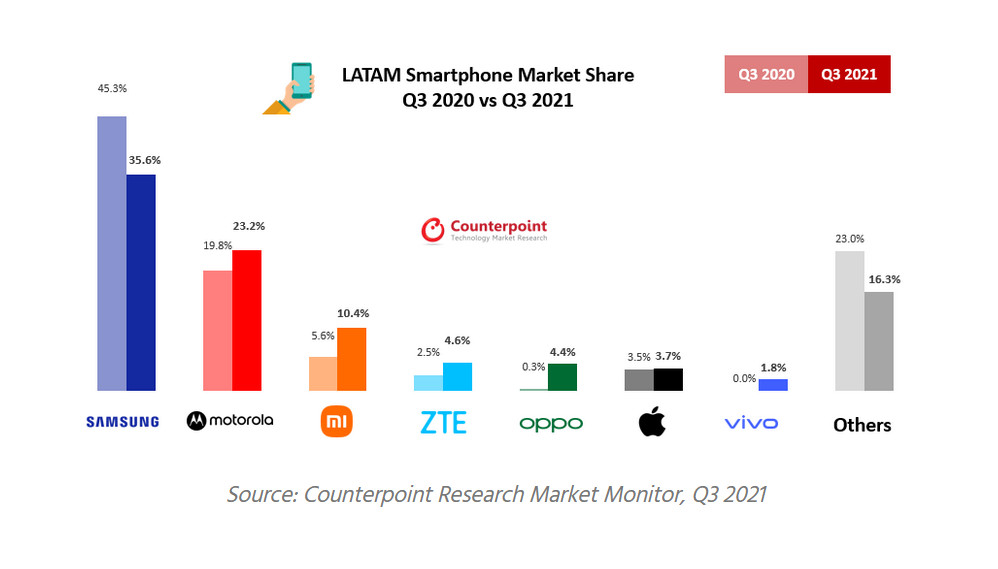The LATAM smartphone market grew only 0.7% YoY and 3.1 QoQ in Q3 2021, despite it getting increasingly saturated with new players. In the last year alone, at least five new brands entered the region but meaningful growth was held back by the ongoing global component shortages.
Samsung continued to hold the top spot in the market despite being impacted by Brazil and Vietnam factory woes (via Counterpoint Research). However, things from the company’s point of view did not look as good as its market share reached the lowest in previous seven quarters. As a result, Motorola which holds the number two spot managed to narrow the gap. Motorola has also been improving its product availability in the region and has thus managed to lead the Mexican market while also improving its position in Argentina and Brazil.

However, even Motorola doesn’t remain unchallenged as Xiaomi that currently ranks third has been improving its hold on the LATAM smartphone market. The company’s shipments almost doubled YoY. But its volume witnessed a drop compared to the last quarter – the first QoQ drop in three years. Xiaomi is a close leader in Colombia and a strong second player in Chile and Peru, and aims to become the leader in these three countries.
ZTE ranks fourth in Latin Market and has almost doubled its volume YoY, with Mexico being its biggest market. It is also focusing on growing in Colombia and Peru in the operator channel.
OPPO has continued to stay aggressive in Mexico and has now expanded to Colombia. The company still needs to work on brand recognition in the latter, so it might take longer to make an impact.
OPPO is followed by Apple and vivo. Apple saw its sales volume decrease to seasonality, as the iPhone 13 was launched only in October in most of LATAM. vivo, on the other hand, has been aggressively expanding its presence in the region and has grown beyond Columbia and Mexico, officially entering Chile.
The “others” category, particularly the “Local Kings”, was impacted once again by the ongoing semiconductor shortages.
RELATED:
- Huawei’s upcoming foldable smartphone to have next-gen hinge with less complexity and more reliability
- Thailand smartphone sales see 14% YoY decline in Q3 2021 but 5G phone sales reach all time high
- TV shipments may have seen YoY decline in 2021, but OLED TV sales see 72.8% YoY increase
- Vietnam smartphone shipments see massive 28% YoY decline in Q3 2021 due to COVID-19
- MediaTek chip shipments ranked first in Q3, UNISOC surged to over 10000% year-on-year






